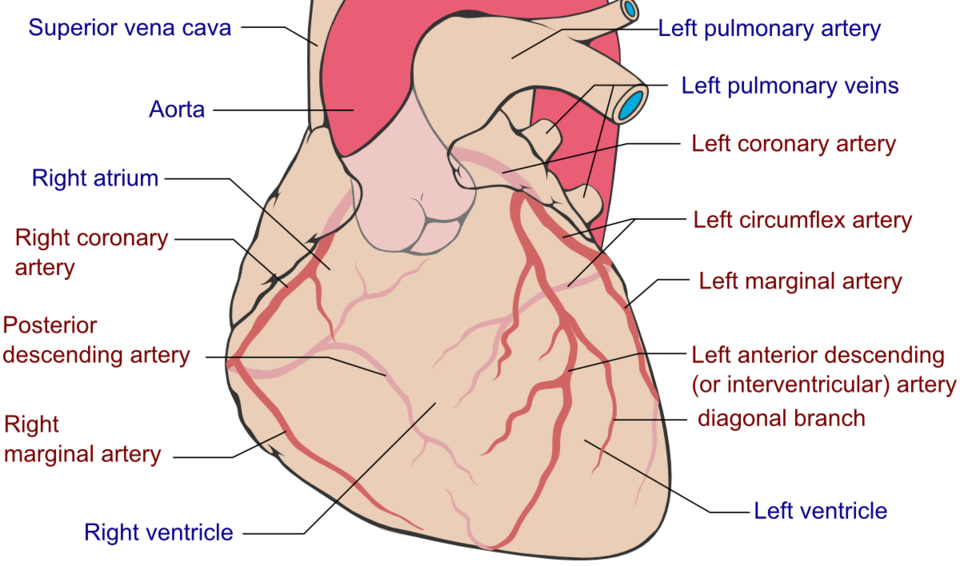Cardiology > Thrombophlebitis
Thrombophlebitis
Background
Thrombophlebitis refers to inflammation of a vein associated with thrombus (blood clot) formation, typically affecting superficial veins. It most commonly occurs in the lower extremities, presenting as a tender, erythematous, cord-like structure along the course of a vein. When it involves deeper veins, it overlaps with deep vein thrombosis (DVT), which carries a higher risk of pulmonary embolism (PE).
II) Classification/Types
By Location:
- Superficial Thrombophlebitis (STP): Involves superficial veins like the great or small saphenous vein.
- Deep Vein Thrombophlebitis (DVT): Involves deep veins (e.g., femoral, popliteal, iliac), typically more dangerous due to embolization risk.
By Cause:
- Septic Thrombophlebitis: Associated with infection (e.g., catheter-related, Lemierre’s syndrome).
- Non-septic/Mechanical: Related to trauma, IV catheters, varicose veins, or hypercoagulability.
By Chronicity:
- Acute: Sudden onset pain and swelling, commonly due to recent trauma, surgery, or immobilization.
- Chronic: Long-standing post-thrombotic changes in the vein wall; more common in recurrent DVT or venous insufficiency.
III) Pathophysiology
Thrombophlebitis arises from Virchow’s Triad:
- Venous stasis (e.g., immobility, varicose veins)
- Endothelial injury (e.g., IV cannula, trauma)
- Hypercoagulability (e.g., malignancy, pregnancy, thrombophilia)
Inflammation leads to local swelling, pain, and clot formation. In septic cases, bacterial colonization of thrombi leads to systemic infection and septic emboli.
IV) Epidemiology
- Sex: Slight female predominance due to varicose veins and hormonal factors.
- Age: Increases with age; peak in 40–60 years.
- Geography: Higher incidence in sedentary populations; associated with climate and health behaviors.
- Comorbidities: Varicose veins, recent surgery, malignancy, central venous catheter use.
Etiology
I) Causes
- Varicose veins
- Intravenous catheters or cannulation
- Prolonged immobility or recent travel
- Surgery or trauma
- Pregnancy and postpartum state
- Malignancy (Trousseau’s syndrome)
- Hypercoagulable disorders (e.g., Factor V Leiden, antiphospholipid syndrome)
- Infection (septic thrombophlebitis)
II) Risk Factors
- Smoking
- Hormonal therapy (e.g., OCPs, HRT)
- Obesity
- Prior history of DVT or thrombophlebitis
- Central venous catheters
- Inherited thrombophilias
- Chronic venous insufficiency
Clinical Presentation
I) History (Symptoms)
- Localized pain or tenderness along a superficial vein
- Redness, swelling, and warmth over the affected area
- Palpable cord-like vein
- Fever and chills (suggestive of septic thrombophlebitis)
- Symptoms of PE (dyspnea, chest pain) if thrombus migrates
II) Physical Exam (Signs)
Vital Signs:
- May be normal
- Fever in septic cases
Local Exam:
- Erythematous, warm, tender, cord-like vein
- Local edema
- No significant distal pitting edema (suggests superficial involvement)
Systemic Findings:
- Signs of sepsis in infectious cases
- Homan’s sign rarely positive in STP
Differential Diagnosis (DDx)
- Cellulitis
- Deep vein thrombosis
- Lymphangitis
- Erythema nodosum
- Lipodermatosclerosis
- Muscle strain or hematoma
Diagnostic Tests
Initial Tests:
- Duplex Ultrasonography:
- First-line to confirm presence of thrombus
- Rules out DVT extension
- CBC, CRP, ESR:
- May show leukocytosis and elevated markers in septic or extensive inflammation
- Blood Cultures:
- If fever or signs of systemic infection
- D-dimer:
- May be elevated but non-specific
- CT/MRI Venography:
- Rarely needed, used in complex or recurrent cases
Treatment
I) Medical Management:
Superficial Thrombophlebitis (without DVT):
- NSAIDs for pain and inflammation
- Warm compresses and elevation
- Compression stockings to support venous return
- Anticoagulation (Fondaparinux, LMWH):
- Indicated if thrombus ≥5 cm, near deep system, or high risk of propagation
Septic Thrombophlebitis:
- Empiric IV antibiotics targeting gram-positive cocci (e.g., vancomycin)
- Blood cultures and targeted therapy based on sensitivities
- Surgical excision or drainage if abscess or persistent infection
If DVT confirmed:
- Full anticoagulation per DVT guidelines
II) Interventional/Surgical:
- Ligation and excision for recurrent, large varicosities or persistent infection
- Catheter removal in catheter-related septic thrombophlebitis
- Thrombolysis in select extensive or limb-threatening cases
Patient Education, Screening, Vaccines
- Importance of early mobilization post-surgery or travel
- Avoid prolonged immobility
- Hydration and calf exercises during long travel
- Report new leg pain, swelling, or fever immediately
- Smoking cessation
- Maintain healthy weight and activity
- Vaccinations as indicated (especially in hospitalized patients)
Consults
- Vascular Surgery: For surgical excision or extensive recurrent thrombophlebitis
- Hematology: For evaluation of thrombophilia in recurrent cases
- Infectious Disease: For septic thrombophlebitis
- Internal Medicine/Primary Care: For comorbidity optimization
- Interventional Radiology: If endovascular treatment is required
Follow-Up
- Repeat ultrasound in 7–10 days to assess clot resolution or propagation
- Monitor for new symptoms (e.g., dyspnea—concern for PE)
- Regular follow-up for anticoagulation if initiated
- Assess for underlying malignancy if unexplained/recurrent
- Lifestyle modification for recurrence prevention
- Compression therapy for varicose veins if present
Recommended
- Peripheral Vascular Disease
- Aortic Aneurysm
- Aortic Dissection
- Aortoiliac Disease
- Carotid Artery Dissection
- Giant Cell Arteritis
- Takayasu Arteritis
- Peripheral Arterial Disease
- Acute Limb Ischemia
- Arteriovenous Fistula
- Intermittent Claudication
- Hypertensive Vascular Disease
- Thromboangiitis Obliterans
- Deep Venous Thrombosis (DVT)
- Venous Thromboembolism
- Thrombophlebitis
- Varicose Veins
- Chronic Venous Insufficiency
- Stasis Ulcers
- Statis Dermatitis

Stay on top of medicine. Get connected. Crush the boards.
HMD is a beacon of medical education, committed to forging a global network of physicians, medical students, and allied healthcare professionals.
